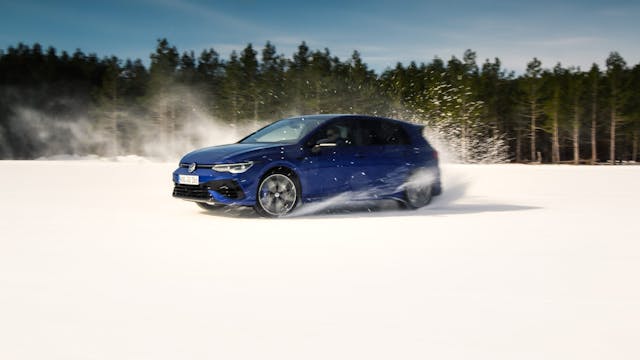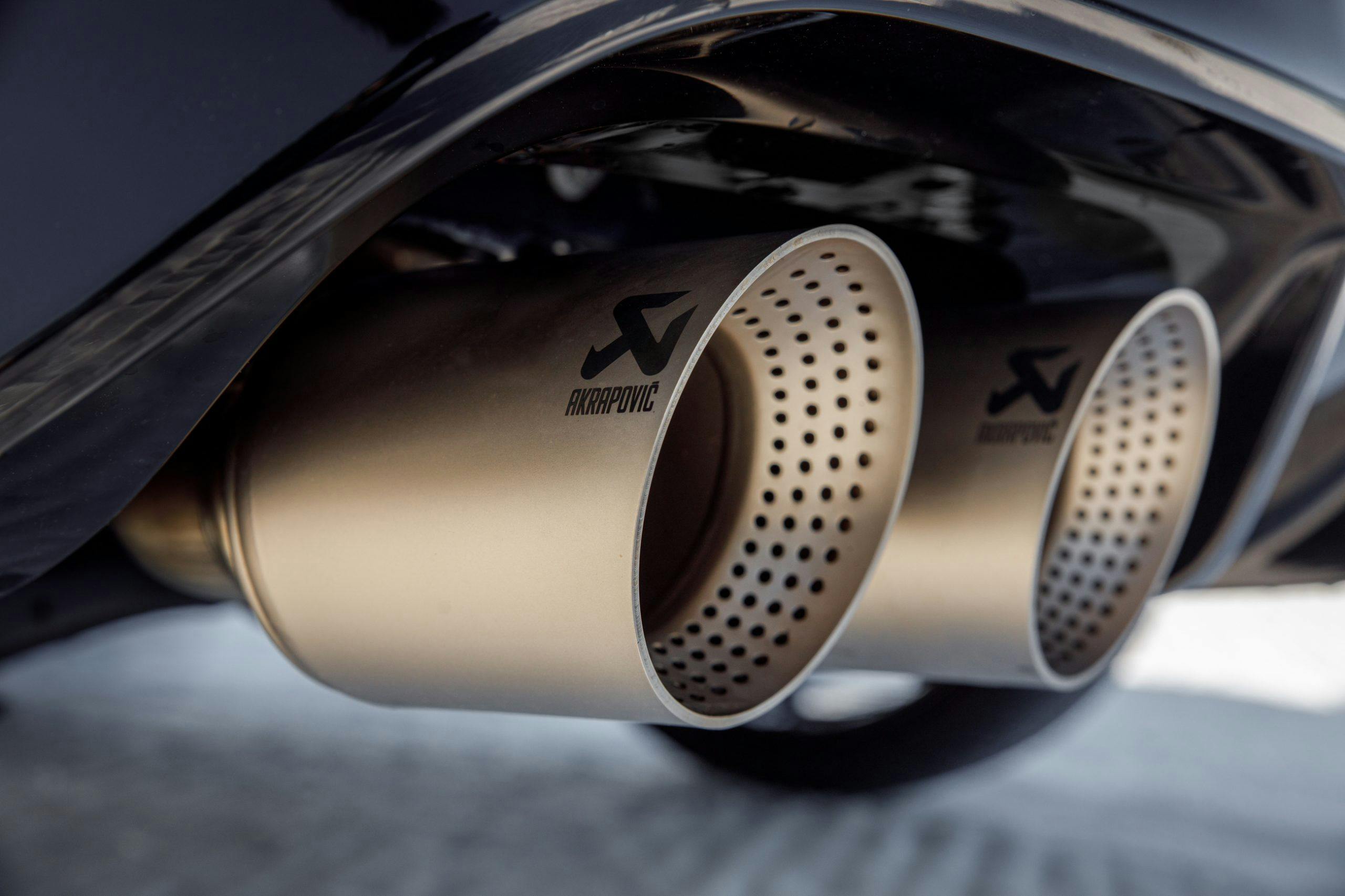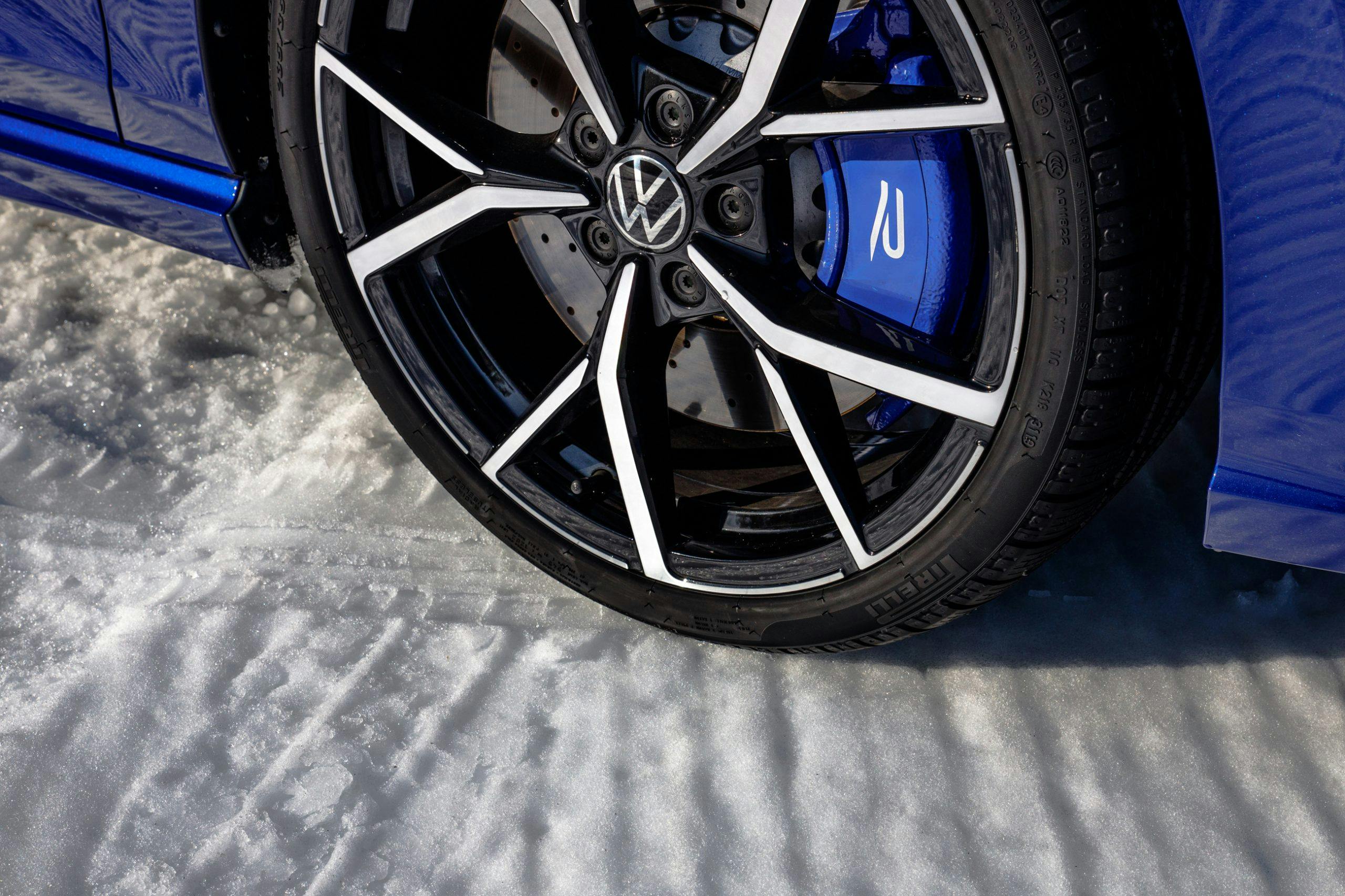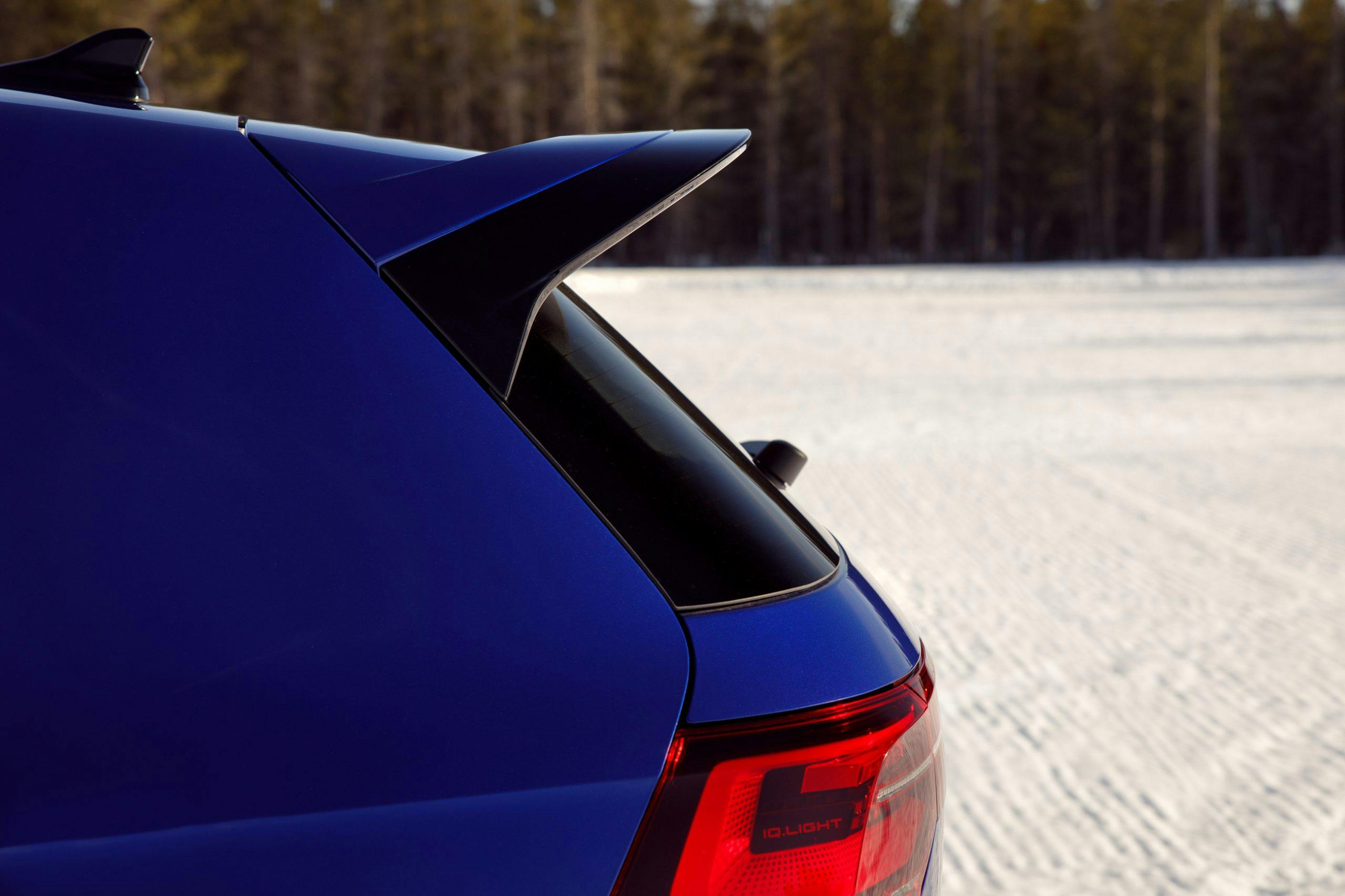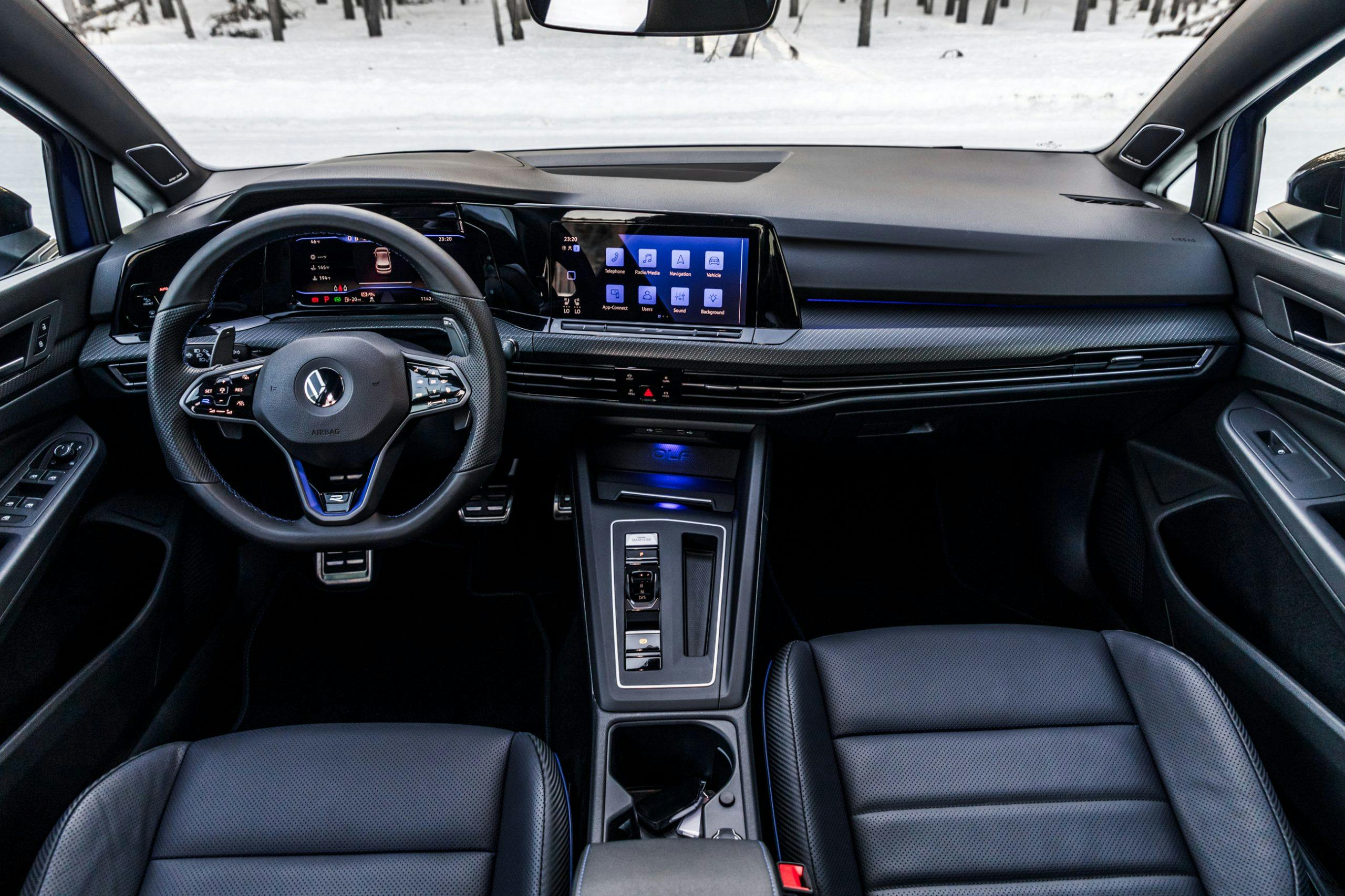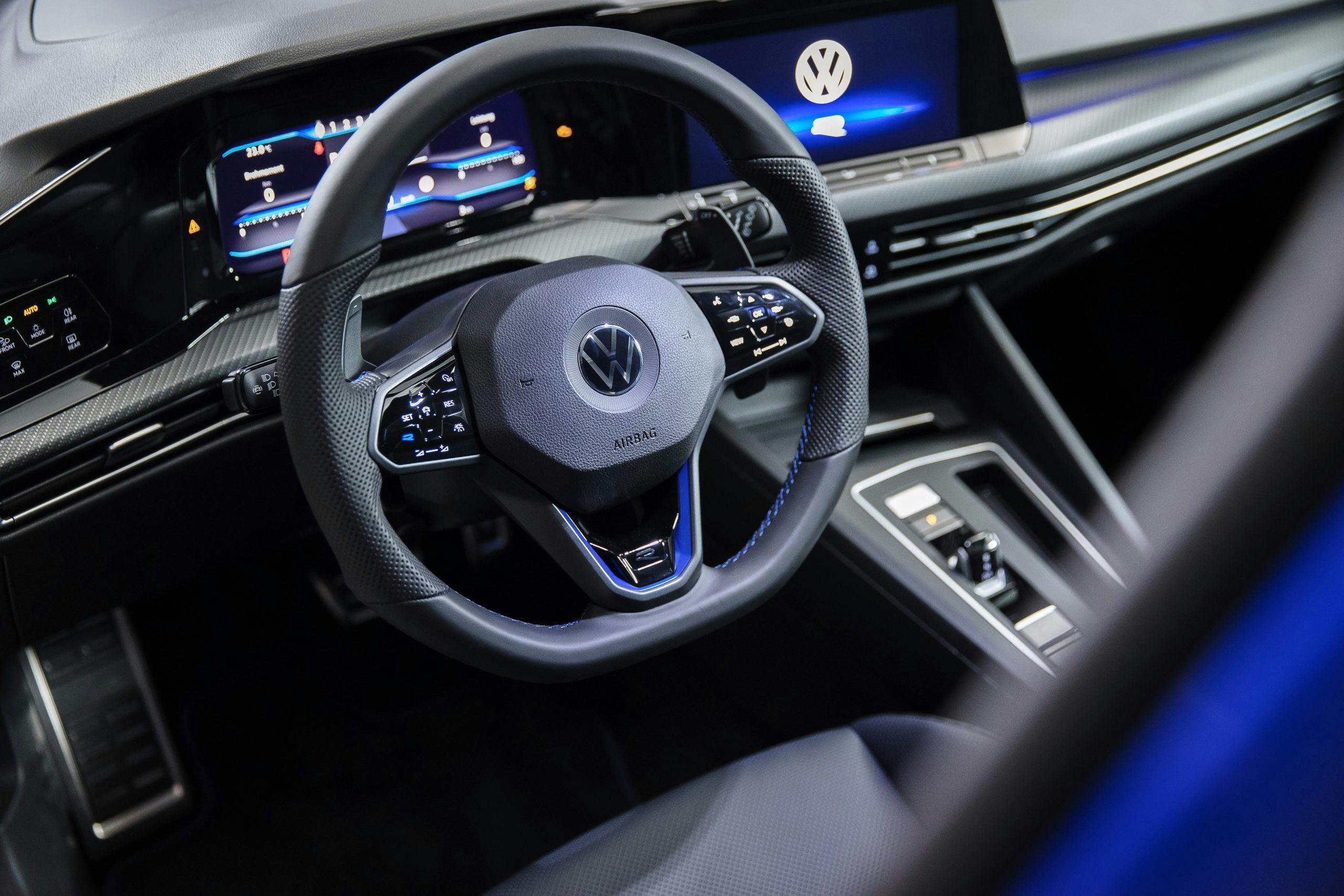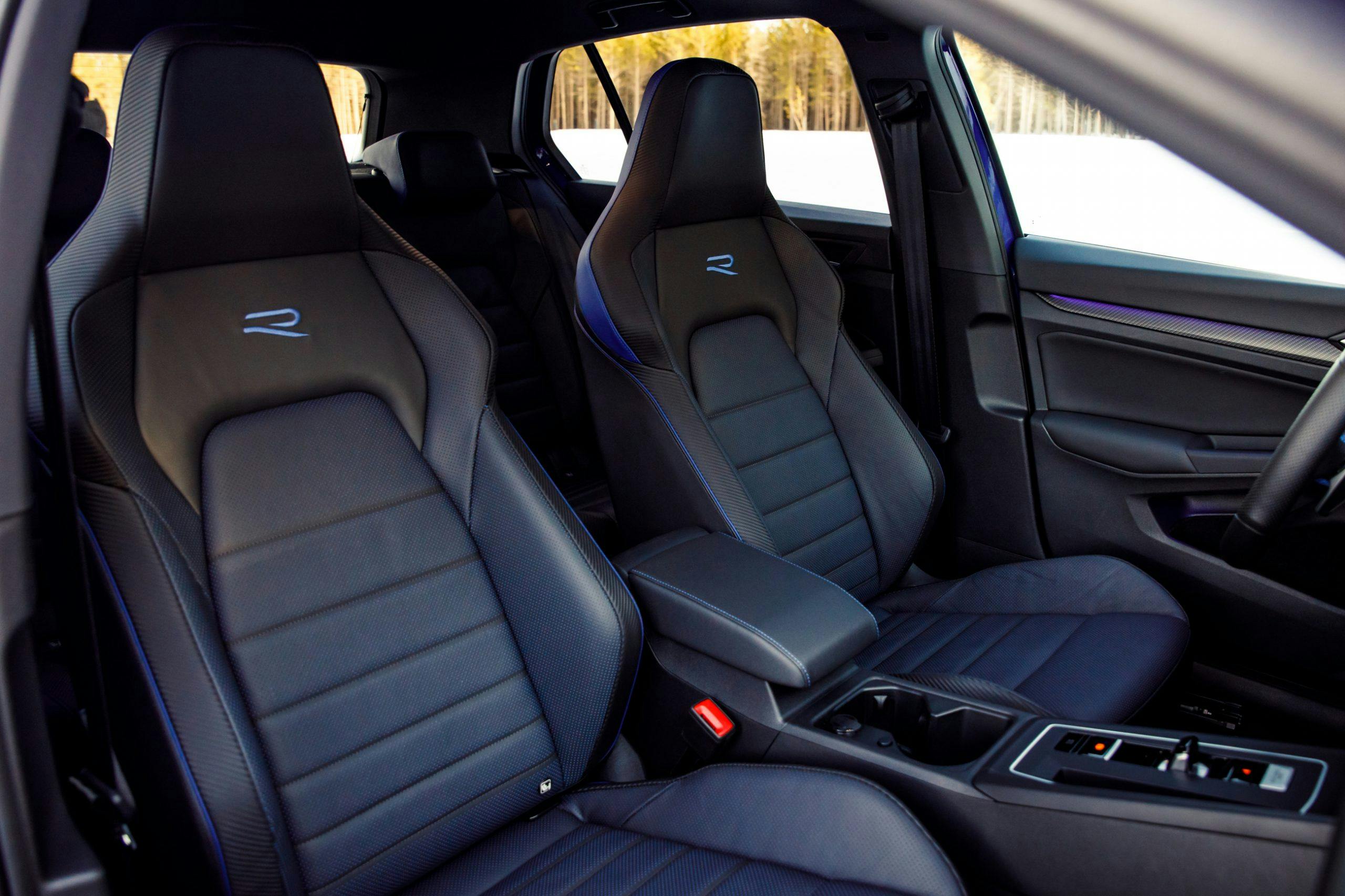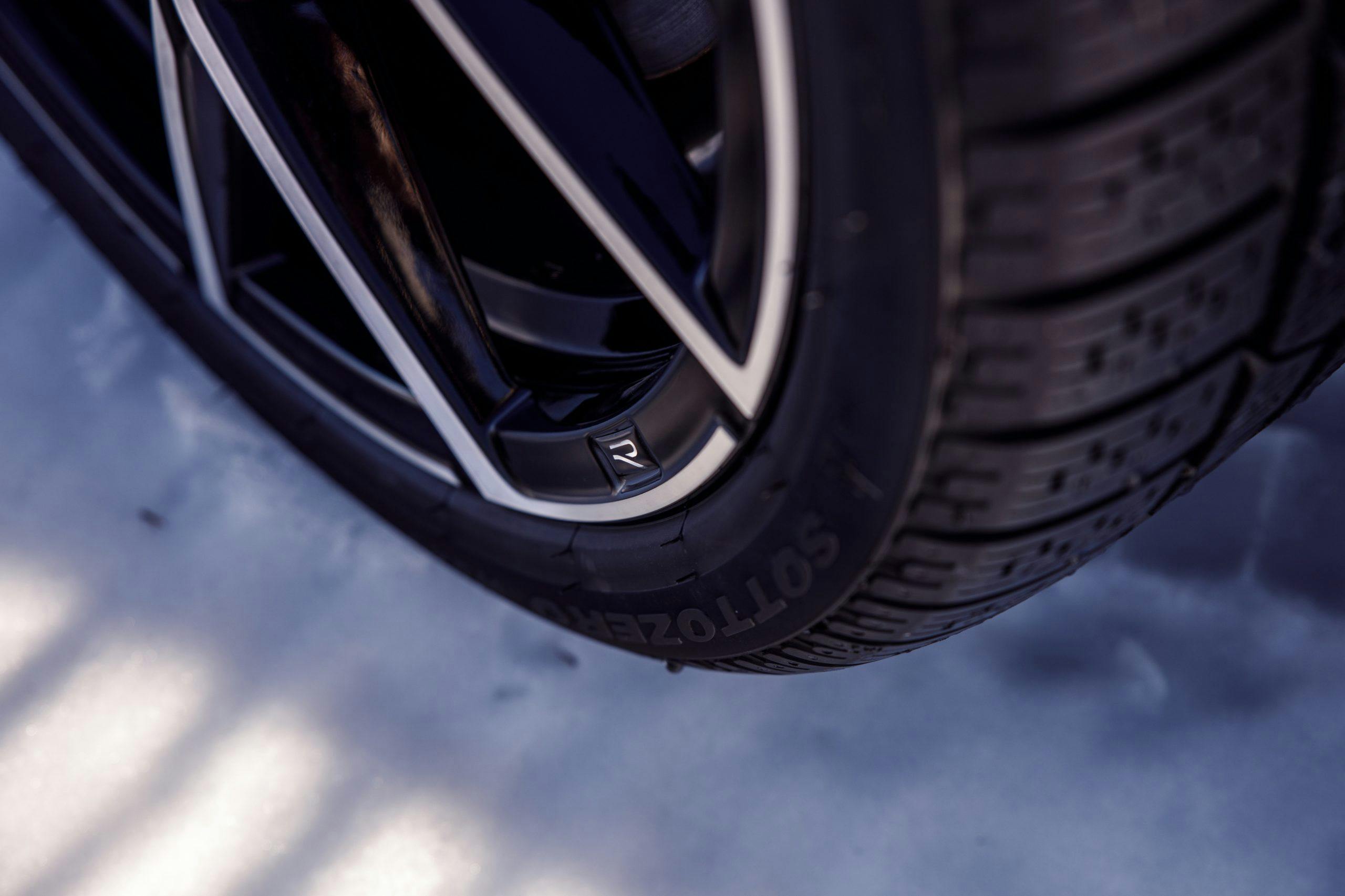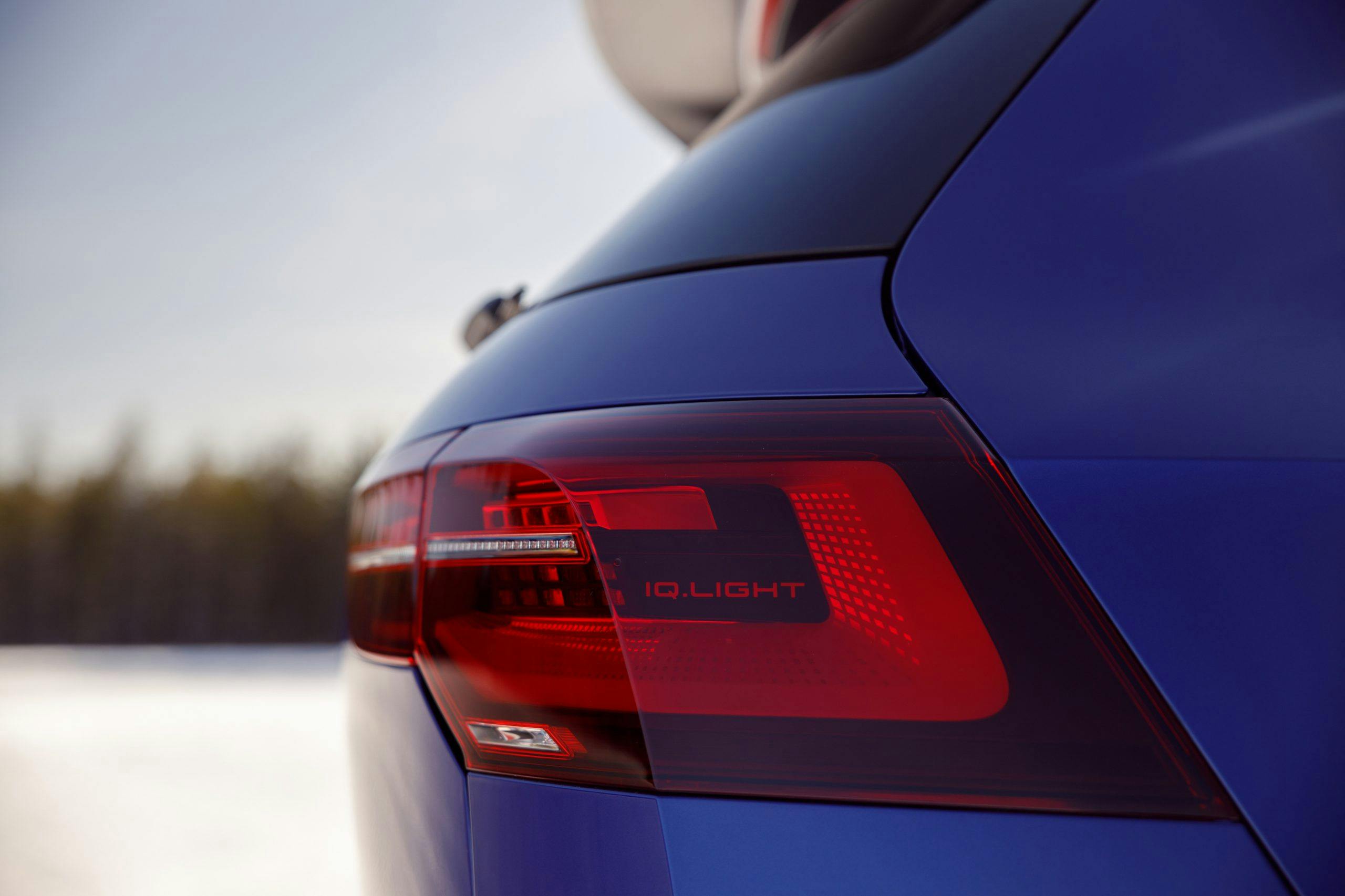Review: 2022 Volkswagen Golf R
In the world of overwrought and often extreme performance machines like the Subaru WRX STI, outgoing Ford Focus RS, and Honda Civic Type R, the Volkswagen Golf R has long struck a more sophisticated posture. Despite these highly capable rivals, the R’s steepest competition has long come from within. The GTI is an awfully compelling proposition for most customers who want a quick, agile, practical daily driver, a reality which renders the $10,000-more-expensive Golf R a niche car within a niche market. (Volkswagen isn’t even selling the standard Golf in the U.S. anymore.) For the Mk. 8 Golf R, Volkswagen focused more than ever on widening the delta between its two hot-hatch mainstays.
As usual, the Golf R packs more power, more performance hardware, and premium features than the GTI, but VW paid special attention to its all-wheel-drive system for this reboot. The 4Motion system still offers a 50/50 front/rear torque split, as with the outgoing Haldex system, but the rear differential can now distribute 100 percent of available output to either wheel, by way of two electronically controlled multi-disc wet clutches.

To showcase 4Motion’s new capabilities, VW invited us up to Michigan’s Upper Peninsula for an early-morning skating session in the 2022 Golf R at the Smithers Winter Test Center. Our test car was in German-market specification, complete with European plates that restricted us from public roads. As with the outgoing Mk. 7 Golf R, the Mark 8 comes standard in North America loaded with every option, including an all-digital Virtual Cockpit, adaptive dampers, and—for the first time—a sunroof. One difference separated our test vehicle from the U.S.-market Golf R: The mean-looking and sweet-sounding Akrapovic exhaust, a 3800-euro option in Europe that, for now, is off the table in North America. It would be excellent to have stateside, but given that the Golf R is a specialty product that has to prioritize minimal ordering complexity (the only paint colors are white, black, or blue), we’re not holding out hope for this option.
Longtime fans of the Golf R won’t be disappointed by the new car’s looks. Though it’s still a relatively subtle thing, the ferocious five-door gains a few distinctive elements that make it recognizable to those in the know. The front end wears a unique grille and splitter, with a wide LED strip between the headlights that sits below an R-specific strip of blue trim. The Golf R also boasts more aggressive aerodynamics courtesy of a two-piece roof-mounted spoiler and rear diffuser, both of which help improve downforce at high speeds. All of this amounts to a slightly more sinister-looking Golf, which maintains the R’s status as the hot hatch you can actually show your boss without looking like a wannabe boy racer.
Underpinning the Mk. 8 Golf is the same MQB platform as before, used across VW’s stable in everything from the Jetta to the Atlas. The R version gets a wallop of modifications, however, with essentially every major component treated for high-performance duty. In addition to the aforementioned torque-vectoring and aero upgrades, the Golf R benefits from larger front brakes than before, with 14.1-inch rotors that are now cross-drilled, along with a larger brake master cylinder for more immediate pedal response. A new aluminum front subframe reduces weight by 6.6 pounds, and along with increased camber the Golf R rides on 10 percent stiffer stabilizers and springs. In concert with the rear axle’s new wheel mounts, damper bearings, and control arm configuration, the Golf R promises more grip and improved stability.
The interior remains typical of the Golf, which is to say that the materials, fit, and finish are far superior to any other small hatchback on the market. The snug seats wisely balance support and comfort, and the restrained use of blue throughout makes the space feel more like an Audi S product than a GTI. As in the all-electric ID.4, the new Golf replaces all physical buttons (save the engine start/stop switch) with a combination of haptic-feedback controls and a large touchscreen. We’ll forgo definitive judgement until we can spend more time fussing with it, but our first impression of this technology was disappointing. While much more impressive to the eye, these controls are neither especially intuitive nor particularly precise. More successful is the transition from a traditional gear lever to an electronic switch for Golf Rs with a seven-speed dual-clutch automatic; the new shift-by-wire setup works simply and saves space while looking convincingly upscale.
We’ll never bemoan extra muscle, and VW made sure to bump power and torque for the Golf R’s turbocharged four-cylinder engine. Whereas the outgoing 2.0-liter made 288 hp and 280 lb-ft of torque, the updated engine ratchets those figures up to 315 hp and 310 lb-ft of torque. That’s a 27-hp increase, compared to the 2022 GTI’s 13-horse bump from 228 to 241 hp. Again, mind the gap.
Even better news is that—like the GTI—the Golf R will continue to offer a six-speed manual transmission as standard. The third pedal will be exclusive to North America, where it accounts for 40 percent of GTI and Golf R sales. If maximum involvement is your priority you may be tempted to tick the box for the stick, but doing so will limit engine torque to 280 lb-ft—the maximum of what the transmission can safely handle. Our test car came equipped with the dual-clutch, which VW says has shorter gears and faster shifts. The DSG proved silky smooth and consistent as ever, firing off upshifts with satisfying exhaust farts from the quad tips.
The Smithers Winter Test Center is located 30 minutes outside of Sault Ste. Marie, close to the Canadian border. OEMs do a variety of cold-weather validation testing here, and we even noticed a handful of Ford Mustang Mach 1 development cars in the Hampton Inn parking lot with us, presumably not in the neighborhood (five hours from Detroit) to check out the historic Soo Locks. With 800 acres of real estate blanketed in snow and ice, Smithers offered more than enough space for us to chuck the Golf R around on a frigid skidpad, slalom, figure eight, and impromptu autocross course.
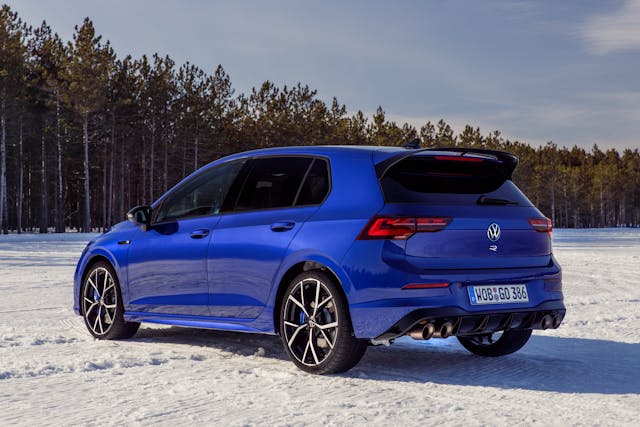
To start, we dialed in our drive settings for ideal drifting pleasure, adjusting the various dynamic elements within the Individual mode so that the throttle and transmission response were amped up, steering weight was a bit heftier, and the suspension was in its softest possible setting. Why the pillow-ride, you ask? With temperature hovering around 40 degrees F, surface ice broke as we drove over it, quickly turning the pristine-looking surface into a frozen field of ruts and potholes that resembled a smooth race track the same way a V10 Touareg diesel could be considered an affordable daily driver. The Golf R wore Pirelli Sottozero winter rubber, which combined with the all-wheel drive provided surprisingly solid traction. Despite the car hopping around like it was competing in the Paris-Dakar of the U.P., with stability and traction control fully defeated the Golf R was relatively simple to instigate into a slide and negotiate big sweeping drifts. Part of the magic here is that, for the first time, the same central computer (the Vehicle Dynamics Manager) that manages the Golf R’s stability control, brake-based handling intervention, and adaptive damping also manages the all-wheel-drive system, allowing everything to work seamlessly in tandem.
Unfortunately, the new torque-vectoring system couldn’t handle the heavy labor of judicious throttle and 40-mph sideways momentum. After about 15 minutes on the icy skidpad, the twin clutches overheated and forced the system into front-drive-only mode. The cool-down period lasted five minutes or so before the AWD could come back online. Not especially heartening, but the Golf R had no trouble hammering around on wet concrete in full Race setting, where the smooth surface made it much easier to feel out the new torque-vectoring system. Because the 4Motion system can direct all of its available torque to either wheel on the rear axle, the Golf R can coax itself out of corner-entry understeer or oversteer even as the driver stays on the throttle.
The technology also allows for a “Drift” mode, which combines the VDM’s various functions to more easily instigate and maintain smooth, clean drifts. Once a slide is initiated, the Golf R senses the yaw angle and directs all rear-axle torque to the outside wheel, maintaining the same yaw angle with a combination of torque vectoring and brake application. On slick concrete, with all systems off, the Golf R was wonderfully neutral and fluid as we ripped around a small figure-eight course, something any understeer-prone WRX would envy. Drift mode is purely a gimmick intended only for a closed course setting like this, but it’s definitely fun. A big Tanner Foustian slide is straightforward as gathering speed, lifting the throttle with some steering dialed in to initiate the drift, and then easing back onto the throttle as the computer sorts out the rest.
The Golf R has always been about that next level of refinement and capability compared to the GTI—perhaps a second car for someone who already has a sports car and occasionally needs the trunk space. This Mark 8 R may be closer to delivering a truly special experience than any effort since the V-6-powered R32. Neither the rugged WRX, the youthful Civic Type R, nor the underdog Veloster N come close to the Golf R’s combination of all-weather performance and genuine German-built quality. Even in light of all of these improvements, don’t expect the alpha Golf to budge much from its roughly $42,000 starting price. We’re looking forward to driving it on proper pavement, but as ever, the R is best understood as a more practical Audi S3 minus the four rings. It has a certain sleeper sensibility, but by no means should you sleep on it. And if the Golf R had to be this good to stay ahead of the GTI, that can only bode well for Wolfsburg’s one-two performance punch.
Editor’s Note: A Volkswagen Group communications representative informed us after publication of this review that the overheating AWD system was the result of several “extreme” conditions. Among these were slush packed in front of and behind the Golf R’s cooling hardware which, coupled with relatively slow speeds on the icy surface, was likely responsible for the high oil temperatures and resulting front-drive-only mode we experienced.
2022 Volkswagen Golf R
Price: $43,000 (est.)
Highs: Punchy engine, outstanding automatic gearbox, material quality that’s head and shoulders above the competition.
Lows: Touch-sensitive controls for their own sake, not because they’re better than buttons. Overheating AWD system under hard use.
Summary: An impressively cohesive, adult-friendly hot hatch that may be well worth the price premium for those who can afford it.
